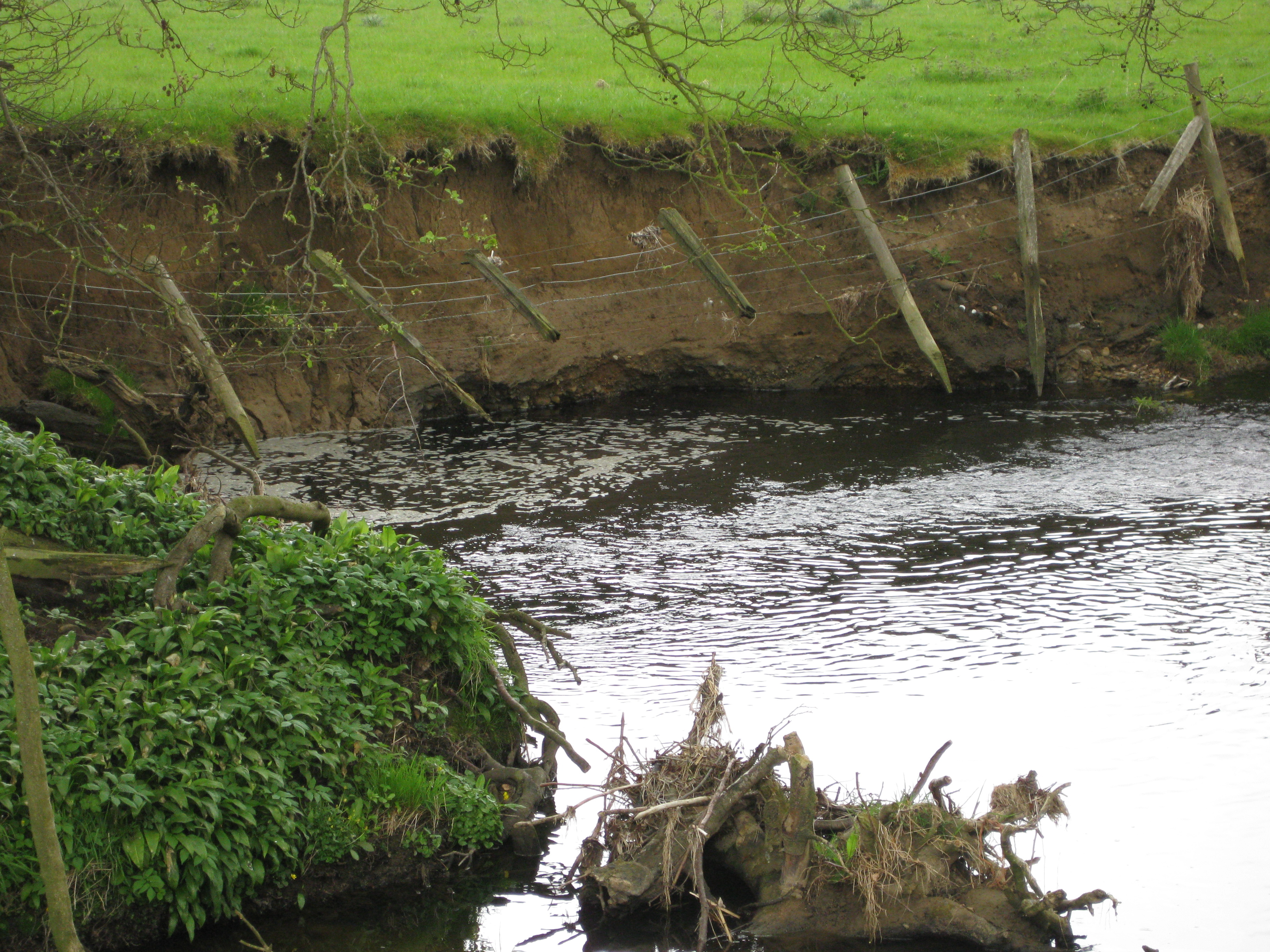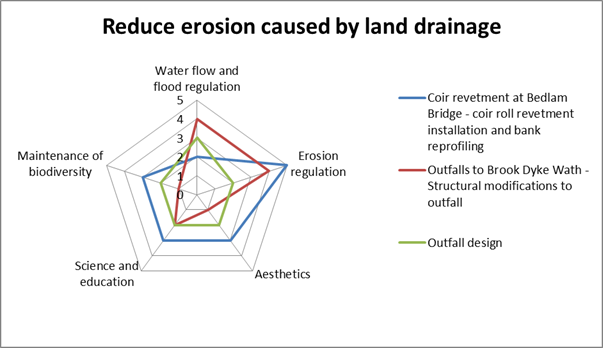These activities are those that drainage authorities (e.g., Internal Drainage Boards or Lead Local Flood Authorities) should be looking to deliver. However, despite the name, these activities should not be specifically focussed on erosion control.
 Land drainage activities predominantly impact upon the banks opposite to the outfall. These activities seek to limit those impacts through soft engineering methods to reduce erosion , whilst retaining the function of the drainage system.
Land drainage activities predominantly impact upon the banks opposite to the outfall. These activities seek to limit those impacts through soft engineering methods to reduce erosion , whilst retaining the function of the drainage system.
Techniques
There are a wide range of techniques that can be used to implement this environmental improvement, depending upon the type and characteristics of the area that is drained in which it is going to be applied. These include:
- Retrofitting erosion control mechanisms where flow control structures are causing bed / bank erosion
- Designing outfalls to include bioengineered erosion control techniques (such as reno-mattressing) to reduce flow speeds and prevent erosion
- Setting pipelines at least 1.5m below the natural gradient of the river
- Using natural materials as a method for any type of erosion control
- Changing abstraction regime or any other localised changes to flow that could impact upon the local form and function of the channel
Benefits
Reducing erosion caused by land drainage can deliver a wide range of direct and indirect benefits, including:
- Direct benefits to plants, invertebrates, birds and animals which live on the banks and riparian zone
- Low whole project life cost and lower long-term maintenance costs than traditional methods
- Low maintenance of live plants after they are established (with the exception of willow)
- Environmental benefits of enhanced wildlife habitat and water quality improvement
- Improved strength over time, as root systems develop and increase structural integrity
- Increased sustainability, due to the use of locally sourced materials and the ability to self-maintain
- Reduces flow velocities by dissipating energy and encourage sediment to accumulate on channel
- Pre- vegetated techniques can limit the establishment of invasive species following construction or disturbance
Case Study Benefits
This diagram displays a comparison of benefits scores (using a high-level ecosystem service assessment methodology) associated with the techniques used in each case study. More details on the methodology can be found here.